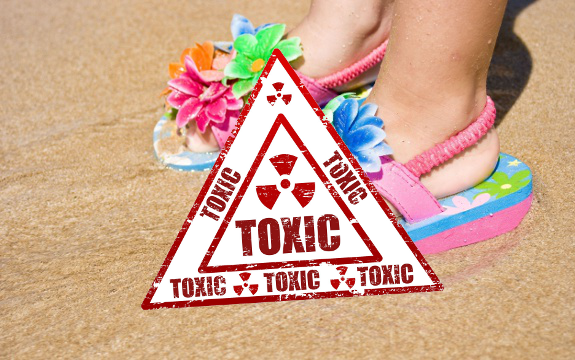Ecology Uncovers Baby Shoes, Toys with Shocking Levels of Toxicity

 (NaturalSociety) Landmark legislation in Washington State has led their Department of Ecology (Ecology) to uncover some troubling toxins found in products used by the smallest among us. After analyzing some 200 children’s products, the agency has made their findings available to the public, so you too can know just how “dirty” some of the products you are bringing into your home are.
(NaturalSociety) Landmark legislation in Washington State has led their Department of Ecology (Ecology) to uncover some troubling toxins found in products used by the smallest among us. After analyzing some 200 children’s products, the agency has made their findings available to the public, so you too can know just how “dirty” some of the products you are bringing into your home are.
The Children’s Safe Products Act (CSPA) requires manufacturers of children’s products to report whether their products contain any chemicals on the “66 Chemicals of High Concern to Children” list. These chemicals, like phthalates, have track records and scientific evidence of causing potential harm to children.
As EcoWatch reports, Ecology analyzed more than 200 products for children including clothing and toys, testing them against the list to ensure producers were acting in accordance with the new law. What they found was that numerous products are chocked full of potentially dangerous chemicals.
One pair of orange baby shoes, for instance, had soles made of 44% phthalates. Worse, they were sandals and designed for warm-weather wear. This means they would have direct contact with baby’s sweaty little feet.
Phthalates are hormone disrupting compounds that have been linked to serious health outcomes. The CSPA and the federal government both set limits on the amount of phthalates used in products. Needless to say, 44% is way over those limits.
You can search all of Ecology’s test results here on their official website. You can also look at the list of 66 chemicals of high concern to children.
Their testing also revealed phthalates in bath toys, fragrances, and cosmetics marketed to children. Less surprising was the presence of phthalates in product packaging.
Parabens were found in baby lotions, make-ups, lip balms, and baby wipes. Parabens are also hormone-disruptors.
Lead, a known toxin and cause of neuro-developmental effects in children, was found in cosmetics, plastic jewelry, footwear, and Halloween costumes and products. Likewise, copper and zinc, identified for their threat to the Washington-local Pugent Sound, were found in buttons, zippers, and other parts of children’s clothing.
Washington’s Department of Ecology is leading the way in chemical reporting in the interest of consumer safety. As we can’t piggyback off their work forever, here’s hoping other states follow suit in holding product makers accountable for the toxins they use.
